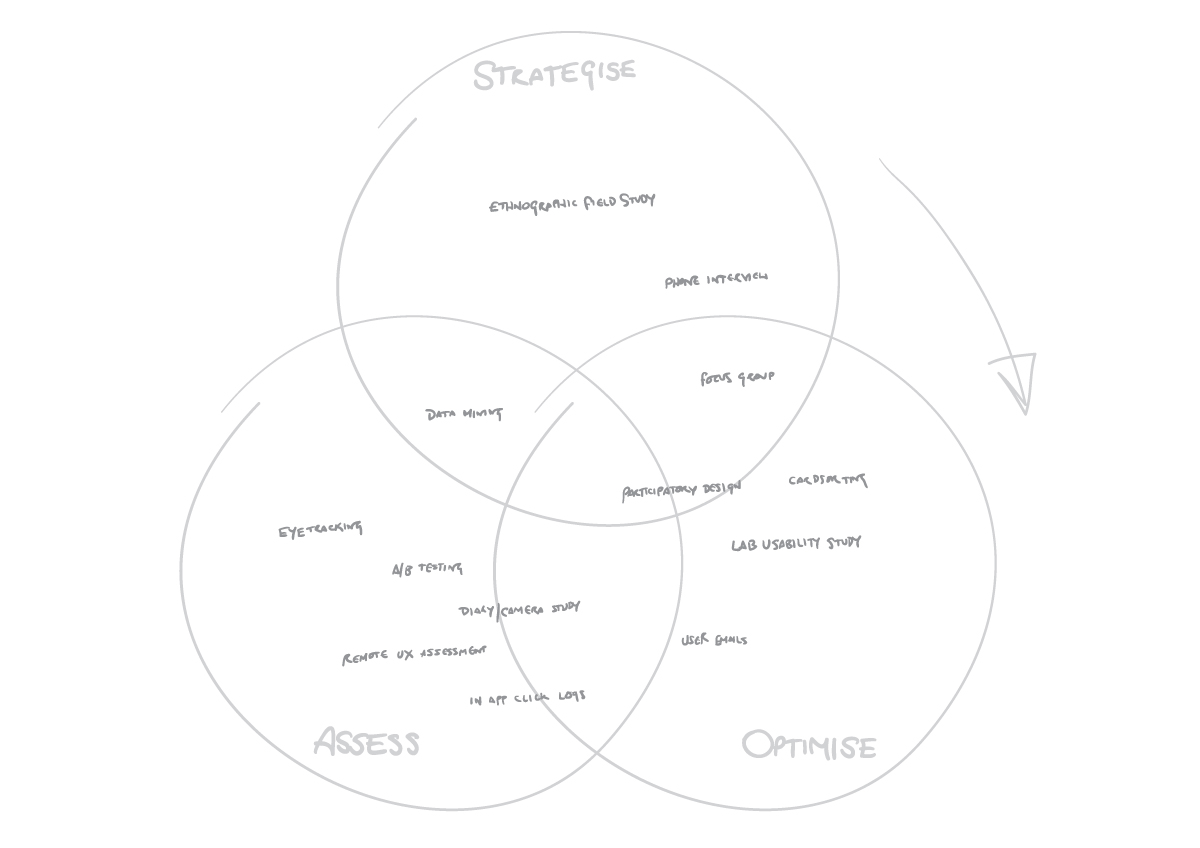
A failure of insight?
An abundance of research tools and techniques enables design teams to understand the most complex of consumer needs. Yet so many apps and devices on the market today are difficult to use or just plain undesirable. How do user-insights become so disconnected from the eventual product?
We need to find ways to ensure that the voice of the consumer is interpreted correctly and championed throughout product development.
Let’s go back to the beginning of the process and consider the context in which user research is commissioned. All too often, the fate of research is decided before it has even been conducted. Internal attitudes and politics can bias the themes being explored and the eventual application of the insights that emerge. Add this to time and budget pressures and you start to see a more complex picture.
We should now consider the methods that are available to help learn more about users and the challenges these approaches present. The most appropriate techniques of course depend on the stage of product development:
- Strategise: searching for new opportunities
- Optimise: refining potential solutions
- Assess: measuring the performance of a product already in use.
(adapted from Nielsen Norman, 2008).
Strategise
Witnessing day-to-day product and service usage in context can be very revealing, not just of existing problems and workarounds, but the subtle attitudes and beliefs that underpin a lot of user behaviour. Alternatively, deep analysis of data can reveal trends that indicate an opportunity. Using inductive approaches like these for idea generation can be very time consuming and does not guarantee a successful outcome. As a result, consultancies are often reluctant to adopt truly inductive approaches, preferring instead to “validate hunches”.
Optimise
Field testing prototypes or acting out future product/service scenarios with props relies heavily on having “good participants”: disciplined enough to provide their thoughts throughout, creative enough to “get” a new scenario, but not over-eager to please (for free pizza). Back in the lab, one-to-one interviews and focus groups can generate great insights, but must also be carefully designed to minimise the influence and agenda of the researcher.
Assess
Quantified testing methods, such as eye tracking and time-to-complete benchmarking, make it easier to compare your product with competitors and make incremental improvements to an existing design. Analytics offer a quick, tangible justification for design decisions that have been made subjectively.
So what’s new in user research? Recent technological developments are making richer user research more accessible to all:
- Much larger volumes of ongoing user data more accessible through embedded behaviour tracking, e.g. in-app click logs
- Proliferation of video conferencing allows researchers to remotely interact with a wider base of users
- Off-the-shelf products are available for eye tracking, recording user sessions and analysing the results
- Growth in freely available secondary sources, e.g. public data sets show broad trends in user behaviour
- More efficient recruitment of participants is possible through demographically targeted ads on Facebook
Regardless of the techniques used, research is an inherently human process, conducting it well requires the researcher to be aware of their own influence on the outcome. As soon as research findings are separated from the people who conducted that research they start to lose their original meaning and can be further warped by other factors like technology push, feature creep and management politics.
One way around this is to ensure that members of the design team take part in the research, regardless of whether it is in-house or external. This ensures those who are involved in the research have an active role in translating their knowledge of user behaviour into the product design. Furthermore, it would give them a feeling of ownership of the process and motivate them to keep looking for hidden answers.
These issues are at the heart of MEX Pathway #17, entitled ‘Improve understanding of user behaviour and enhance how that insight drives design decisions’ and will be explored at the next MEX in London on 26th – 27th March 2013. Some of the questions to be considered include:
- Which research methods are best suited to imagining radically new products?
- Do the most valuable user insights result from the targeting and commitment inherent in crowd-funding platforms like Kickstarter?
- Is the process of commissioning outsourced user research incompatible with breakthrough design decisions?
- How is technology improving the efficiency of user research? How can the increasing volume of data analytics support design?
- Does an iterative development approach provide better overall experience or risk straying from the original vision?
I’d love to hear views from anyone working in this area. Feel free to add your comments to the article, get involved at MEX or get in touch by email or by twitter.


There’s an interesting thread on the IxDA discussion board on this topic: http://www.ixda.org/node/33789